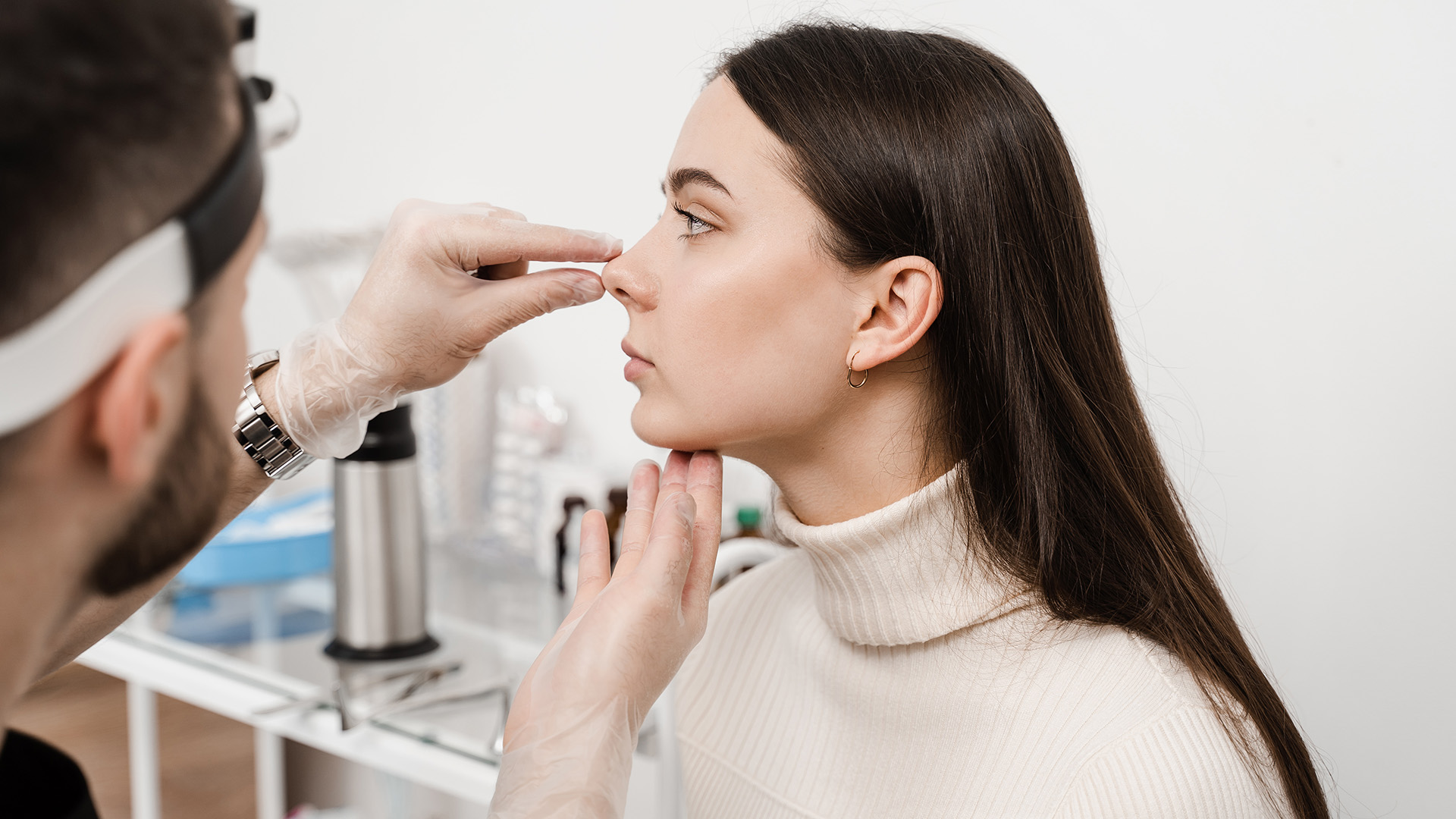Septoplasty vs. Rhinoplasty: What’s the Difference?

If you’re reading this, there’s a good chance your nose has been causing more frustration than it should. Maybe you’re dealing with chronic congestion, snoring, poor airflow, or you’re unhappy with your nose’s appearance. (Or, perhaps you’re dealing with all of the above.) The good news is that regardless of your concern, you have options — and board-certified ENT and fellowship-trained surgeon Dr. Arjuna Kuperan is here to help.
“There are two commonly used terms you’ll likely stumble across when researching solutions: septoplasty and rhinoplasty,” Dr. Kuperan explains. “Both of these procedures involve reshaping, repositioning, and removing tissue from the nose — but they’re done for different reasons and to achieve different results.”
Here’s a helpful breakdown of each surgical procedure and a few considerations to keep in mind as you explore your options.
What Is Septoplasty?
A septoplasty differs from a rhinoplasty primarily because it’s done for functional purposes rather than to address aesthetic concerns.
Here’s what you need to know about this procedure:
Purpose of Septoplasty
A septoplasty surgery corrects irregularities in the septum (i.e., the thin wall of cartilage separating your nostrils). When your septum is crooked or off-center septum, it can block airflow through one or both nostrils and lead to chronic nasal congestion, sinus infections, snoring, and sleep disturbances. A septoplasty treats these issues by addressing the structure of the septum to restore nasal airflow.
How Septoplasty Works
After carefully lifting the nasal lining, Dr. Kuperan will reshape or remove any parts of the septum limiting your airflow without compromising your nose’s structural integrity. Then, he’ll carefully secure the lining back into place using dissolvable sutures. In some cases, he may also use small internal splints to stabilize your repositioned septum as it heals.
All septoplasty surgeries are performed under general anesthesia to keep patients comfortable, and because it’s an outpatient procedure, most patients can go home the same day.
Because Dr. Kuperan uses minimally invasive techniques, septoplasty recovery is straightforward, and many patients feel immediate relief. However, it’s normal to experience some swelling and mild discomfort for the first few days. You should avoid vigorous exercise, heavy lifting, or blowing your nose for the first few weeks but can resume most activities within a month.
Who Needs Septoplasty?
You might be interested in deviated septum surgery if you’ve experienced difficulty breathing through one or both nostrils, have a history of chronic sinus infections, or frequently snore or wake up due to blocked nasal airflow.
What Is Rhinoplasty?
Sometimes referred to as a “nose job,” a rhinoplasty is generally considered a cosmetic procedure and does not correct a deviated septum. However, Dr. Kuperan offers a procedure known as a functional rhinoplasty, an advanced surgery primarily used to enhance breathing, with the added bonus of achieving subtle cosmetic changes.
Purpose of Functional Rhinoplasty
While a cosmetic rhinoplasty focuses on the external structures of the nose, functional rhinoplasty addresses internal issues that interfere with breathing. Functional rhinoplasty can include a number of different techniques, including septoplasty, inferior turbinate reduction, or treatment for nasal polyps.
How Functional Rhinoplasty Works
Dr. Kuperan will use specialized instruments to access your nasal cavity, making incisions typically inside the nose so there will be no visible scars. Then, Dr. Kuperan will straighten the septum and repair any nasal structures as needed.
Like septoplasties, rhinoplasties are performed as outpatient procedures under general anesthesia, and most patients can go home within a few hours.
Most patients return to work and social activities after just one week. However, although most swelling resolves within a few weeks, you’ll continue to see subtle changes and refinements as any lingering inflammation subsides. It’s important you follow your post-op plan to ensure optimal healing and a more comfortable experience.
Who Needs Functional Rhinoplasty?
You might be interested in a functional rhinoplasty if your breathing feels obstructed, if you have sleep issues, or if you suffer from chronic sinusitis or sinus headaches.
Can Septoplasty and Functional Rhinoplasty Be Done Together?
“In many cases, septoplasty and functional rhinoplasty go hand in hand. While septoplasty corrects a deviated septum to improve airflow, functional rhinoplasty addresses additional structural issues—like collapsed nasal valves or twisted cartilage—that can also block breathing. Combining the two procedures allows our team to fully restore function in one surgery, giving patients the best long-term outcome,” Dr. Kuperan explains.
Because Dr. Kuperan has advanced experience in endoscopic nasal surgery and functional reconstruction, he is well-equipped to perform this combination procedure and deliver improved breathing. To ensure natural-looking results that are as beautiful as they are functional, Dr. Kuperan often collaborates with Dr. Sanaz Harirchian, a rhinoplasty expert with My Houston Surgeons.
Experiencing sinus issues and don’t know where to start? Our sinus quiz can help!
How to Choose the Right Procedure for You
If you’re not sure whether a septoplasty or functional rhinoplasty is right for you, consider the following:
- If you’re primarily concerned with breathing issues, like chronic nasal congestion, obstructed breathing through one or both nostrils, mouth breathing, or frequent snoring, you’ll likely benefit from a septoplasty.
- If the internal structures of your nose are preventing proper breathing or you’ve experienced an injury or previous surgery that created lingering issues, you’d likely benefit from a functional rhinoplasty, which can address deeper anatomical concerns beyond the septum.
In some cases, combining both procedures offers the most comprehensive solution. Regardless, the best next step is to speak with an expert. Dr. Kuperan is happy to examine your nose, listen to your concerns, and create a personalized plan that helps you breathe—and feel—better.

